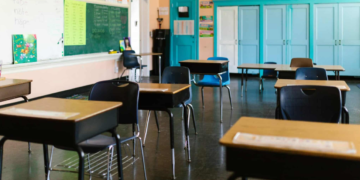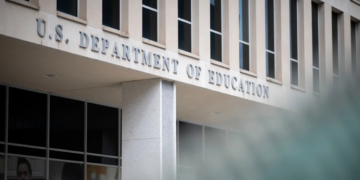Jun 8, 2024 Story by: Editor
Recent federal data indicates that Black students are nearly four times more likely to be suspended than their white counterparts. The extensive biannual survey conducted by the U.S. Department of Education, which assessed over 50 million students, shows an overall decline in suspensions of nearly 20% between the 2011-12 and 2013-14 school years.
However, the report uncovers significant disparities in suspension rates among different demographics. Beginning as early as preschool, Black children are 3.6 times more likely to face one or more suspensions compared to white children. The data reveals that while Black girls make up 20% of female preschool enrollment, they account for 54% of preschool suspensions. Additionally, Black students were found to be twice as likely to be expelled compared to their white peers.
Liz King, director of education policy at the Leadership Conference on Civil and Human Rights, described the data on discipline among Black preschoolers as “disturbing.” She expressed concern about the implications for young children, stating, “We wonder what message that sends to those four-year-olds about their value in the school.”
The latest data collection also addressed issues previously overlooked by the education department, such as chronic student absenteeism and the absence of resource officers in certain schools. While 95% of high school students have access to at least one school counselor, over 20% of schools reportedly lack any. Alarmingly, around 1.6 million students attend schools with police officers but without a school counselor.
King emphasized that the shortage of counselors highlights ongoing inequities in public schools, noting, “Schools should be equalizers of opportunity but instead we’re seeing them reinforce inequity.”
The federal government has been gathering and publishing findings on civil rights data from schools since 1968. This recent collection mirrors the 2011-12 data gathering and includes information from nearly every school across the U.S.
These findings were released in advance of initiatives from the U.S. Departments of Education and Housing and Urban Development aimed at enhancing diversity in schools. On Wednesday, these agencies will host an educational policy session to discuss the findings.
“Diversity benefits all students in schools,” said John King Jr., the U.S. Secretary of Education, in a statement. “Our schools, as well as our communities, should reflect the increasing diversity in our nation.”
For the first time, the education department’s new data also reveals insights into chronic absenteeism among students and teachers. In the 2013-14 school year, 6.5 million students—representing 13% of all students—were chronically absent, meaning they missed 15 or more school days. The data also indicates that 3.5 million elementary school students fall into this category.
Chronic absenteeism is notably prevalent among minority students in schools where their teachers frequently miss class. Although Black students represent 15% of the total student population in the U.S., they account for 21% of chronically absent students in schools with more than 50% of teachers absent for at least 10 days.
Robert Balfanz, director of the Everyone Graduates Center at Johns Hopkins University, stated that chronic absenteeism has a profound impact on academic success and progression. “It reduces the likelihood of reading on grade level by third grade,” he explained, adding that for teenagers, “it’s a better predictor of dropping out than test scores.” He further noted, “Its impact is greatest on high-poverty students, the very students who benefit most from being in school on a regular basis. This undercuts the impact of school reform, as many of the students for whom the reforms are designed are not there regularly to receive them.”
Nationwide, access to advanced courses remains inconsistent, with racial disparities continuing to emerge. According to the data, only 48% of high schools in the U.S. offer calculus, while approximately three-quarters provide courses in chemistry and algebra II. The report also shows that Black and Latino students make up 38% of the student population in high schools with Advanced Placement (AP) courses, yet only 29% are enrolled in at least one AP class.
During a press call with reporters prior to the data’s release, King reiterated the need for further action to ensure that all children in the U.S. receive a quality education. “Our systemic failure to educate some groups of children, as well as others, tears at the moral fabric of the nation,” he remarked. “What sets the U.S. apart from any other country is the idea that opportunity is universal. These data show that we still fall far short of that ideal.” Source: The Guardian

















